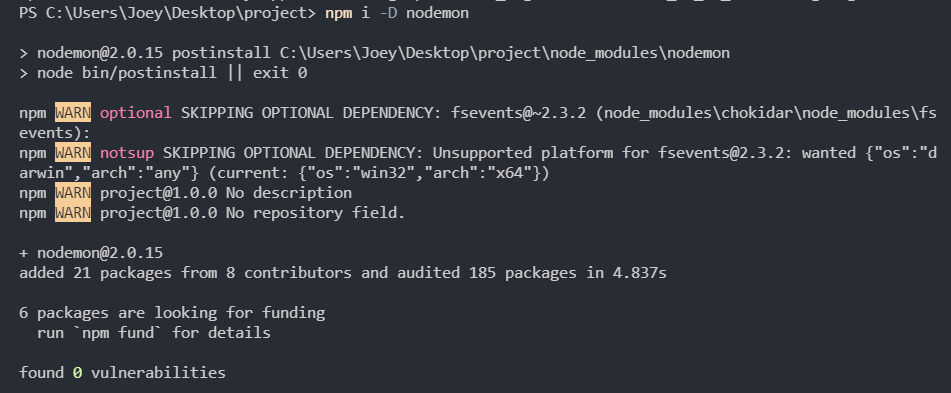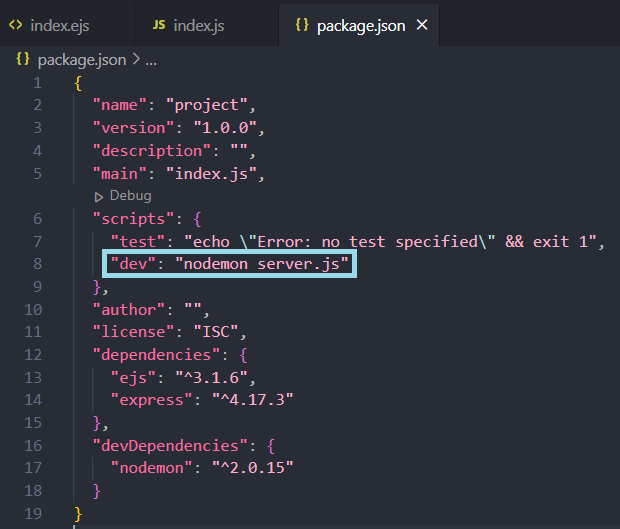Requiring Express.js
Overview
In Task 1, we installed the Express.js library. In order to actually use Express.js in our code, we need to require it. In this task, we will be adding code to our index.js file to require the Express.js library.
We will also be installing a library called nodemon which will automatically restart the localhost server every time you save a file. This eliminates the need to manually restart the server to see changes.
By the end of this task, you will be able to see “Hello World!” printed in your browser on localhost.
Requiring Express.js, installing nodemon, and sending “Hello World”
1. Open the index.js file and copy and paste the following code into the editor.
const express = require('express')
const app = express()
const port = 3000
app.set('view engine', 'ejs')
app.get('/', (req, res) => {
res.send('Hello World!')
})
app.listen(port, () => {
console.log(`Now listening on port ${port}`)
})
Notice in the codeblock above, we have this line:
app.get('/', (req, res) => {
res.send('Hello World!')
})
The line that reads res.send('Hello World!') tells Express.js to send out text that reads “Hello World!” to the browser when the page loads. We will check to see if “Hello World!” successfully prints in the browser in a few steps.
2. Run the command npm i -D nodemon in the terminal to install the nodemon library.
Just like in Task 1 when you installed Express.js and EJS, wait until the installation has completed. If the installation was successful, the prompt found 0 vulnerabilities will be printed on the terminal.

💭 NOTE: You can confirm the installation of nodemon in the package.json file. nodemon should be listed under a heading called devDependencies.
3. Open the package.json file. Under scripts, add a comma after "test": "echo \"Error: no test specified\" && exit 1" then add "dev": "nodemon server.js" under it
❗ WARNING: Do not change anything else in the package.json file.

💭 NOTE: Remember to save the file after making changes.
4. Run the command npm run dev in the terminal to start the server
Once you have run the command npm run dev, the server will automatically refresh with each save, which means that you do not need to run the command while the server is active.
💭 NOTE: To end the server session, press [CTRL] and [C] simultaneously while in the terminal. Closing VSCode will also automatically end your server session.

Test that nodemon works by saving the file. You should see messages in the terminal of the server restarting.
5. Open up your browser and enter localhost:3000 in the URL and hit [Enter]
You should be able to see “Hello World!”.

Conclusion
That is the end of task three! You have successfully required Express.js in your project, installed the nodemon library, and used Express.js to send text onto your localhost browser page.
Remember the block of code that told Express.js to send ‘Hello World!’? Try replacing “Hello World!” with your own message!
For example:
app.get('/', (req, res) => {
res.send('Your new message here')
})
💭 NOTE: Make sure to enclose your message in quotation marks! Either single or double quotation marks will work.